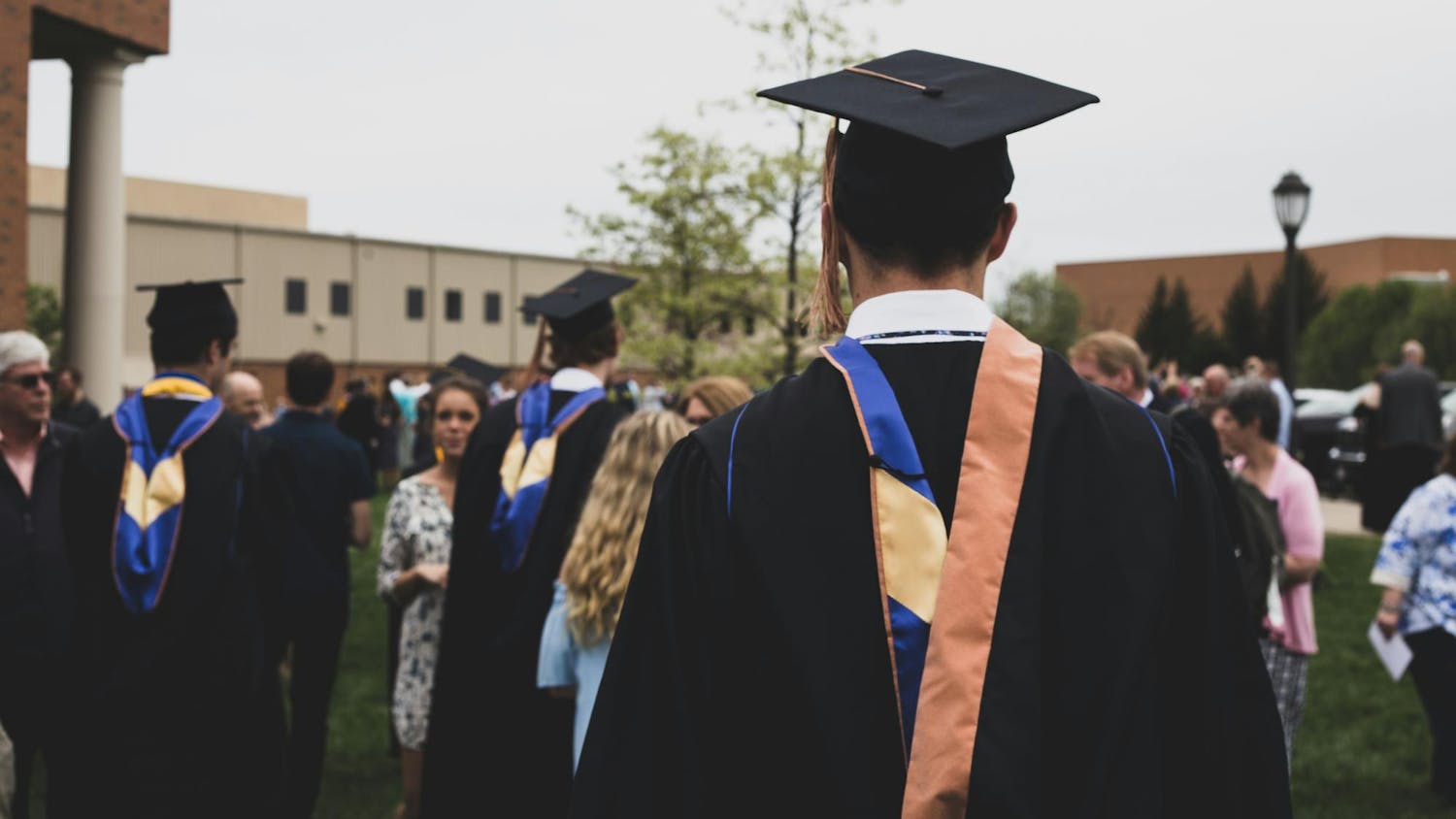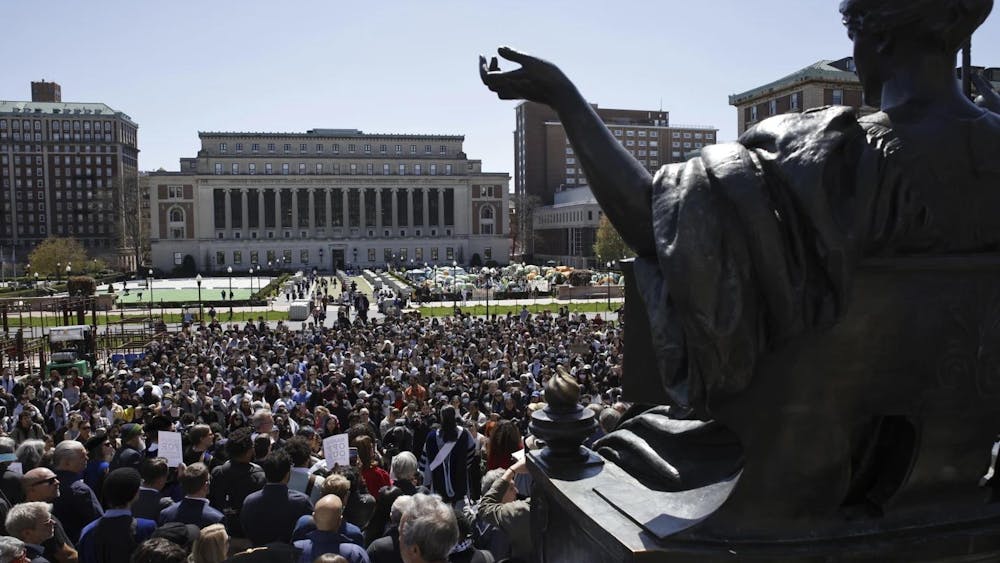As a first-year law student in 1970, Kathleen Cekanski-Farrand was one of 12 women out of 250 in her class, part of only the third coeducational graduate class in the Law School.
Two years later, Cekanski-Farrand was mailing letters to welcome 119 women of the first female undergraduate class into her care in Badin Hall. In 1972, she was a third-year law student and the dorm's first rector in beginning days of coeducation.

"I thought some of the challenges that we had probably would be similar at the undergraduate level that we had at the Law School level," Cekanski-Farrand said. "So I thought I could share some of those experiences and turn them into positives."
Cekanski-Farrand earned the job when she interviewed with then-vice president of student affairs Fr. Tom Blantz. Blantz, who stepped into that position in 1971, had been part of the administrators who determined the University would directly admit women to its undergraduate student body following failed discussions to merge Notre Dame and Saint Mary's.
"We wanted women on the campus because having an all-male school was maybe less attractive to some of the people out there who were coming from coed high schools," Blantz said. "[Men and women] should study together so they could work together later on, and there should be places for young Catholic women to go to Catholic schools. ... When the merger was called off, I think it was a logical expected step that we would admit undergraduate women ourselves.
"It was pretty much around the Thanksgiving weekend [of 1971] that I got a call from the provost ... that they had decided to admit about 325 women for next year, in the fall of 1972."
Approximately 125 freshmen women joined that incoming group of undergraduates, while 200 female students transferred to Notre Dame from Saint Mary's and other schools, Blantz said.
Blantz reviewed the dorms and decided to place the incoming women in Badin and Walsh Halls, and when Notre Dame admitted 500 more women the following year, he opened Breen-Phillips Hall and Farley Hall as well.

"The first group of women, they had to put up with a lot," Blantz said. "You had 300 women and 5,000 men roughly, so the odds, you are a minority. In the seminar, it's quite probably you are the only woman in the class and that could be a little bit uncomfortable."
Some of the women were quiet in their courses at first upon entering these male-dominated classrooms, Blantz said.
"I remember teaching a University seminar, a freshman seminar with 16 in the class, two women in the class and 14 fellas," he said. "And the women rarely said anything but when they handed in their written papers, I could tell the two women were extremely bright. So it was just a question of trying to get them to open up and talk more. I think now you don't have that problem at all."
As her residents became more comfortable with Notre Dame life, Cekanski-Farrand said she worked to build a "Badin Hall family."
"A family is what holds you together, is what keeps you together so that you feel comfortable sharing your concerns, both the good days and all the bad days too, and that they felt comfortable sharing if they had a problem in the classroom," she said. "The more you share, the more you communicate, the better the adventure is going to be."
There were challenges to life in Badin Hall that first year, she said, from a cockroach problem to "panty raids" when male students would run through the hallways for women's underwear. But Cekanski-Farrand worked to develop a dorm identity and support her resident by promoting a Badin Hall T-shirt and visiting classes to see for herself how her students were being treated.
"We had to find some common ground," she said.
Even as that common ground became sturdier through the first months and years of coeducation, many graduates protested the initial decision to admit women to their alma mater. But Blantz said he saw this as a positive.
"I remember giving a talk once [to alumni], and there was opposition to coeducation," Blantz said. "One guy apologized, and I said, 'No, no, I'm happy to hear this. If you guys were happy that we were going coed, then I think we wanted too long to do it. That you were happy and satisfied with your education and the way we gave it to you back then when it was an all-male school, now we simply have to demonstrate that we can do the same thing with men and women here.
"'But if you people were all happy that we were finally admitting women and changing, then we would have to think, boy, we should have done it 20 years ago and they weren't happy here.'"
Blantz returned to teaching in the fall of 1973 after two years in student affairs, and Cekanski-Farrand served as a rector in Breen-Phillips Hall before leaving Notre Dame and eventually beginning the first all-female law firm in Indiana. But she said Blantz and University President Emeritus Fr. Theodore Hesburgh remained by her side through those years as a rector and remain close friends today.
Hesburgh himself only visited the dorm on a handful of occasions, Cekanski-Farrand said, but he did gift the women the first Badin Hall mascot - a small Snoopy statue that would represent the dorm for years. He judged a door-decorating competition at Christmastime, and Cekanski-Farrand said Hesburgh would often call her to make sure everything in the women's hall was running smoothly.
He shared her commitment, she said, to integrating women into the student body and bringing Notre Dame to the place it is today.
"[Hesburgh] took the time to do that," she said. "I couldn't have asked for a more gracious individual who was wanting to make this a positive for the University.
"Whatever it took to make it work, extra hours, we would do it."












